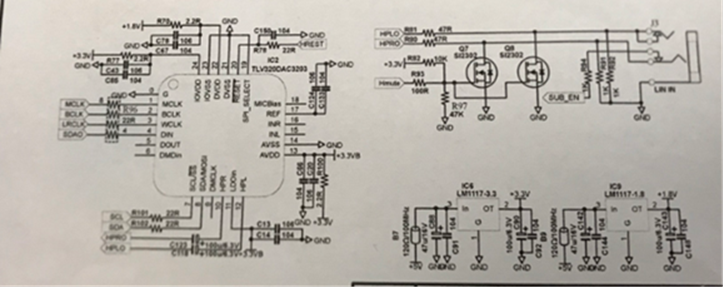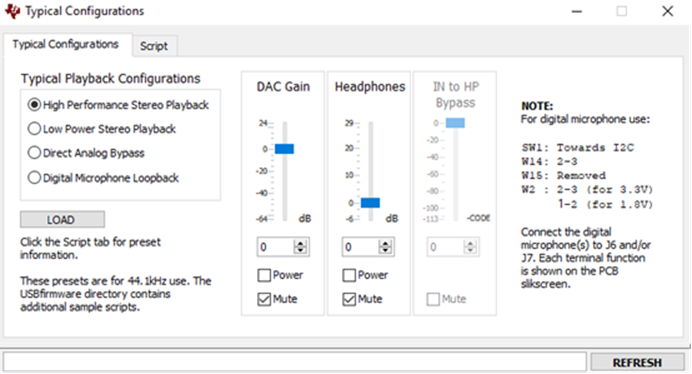Hi, teams
it’s about TLV320DAC3203 pop noise when power up and power down, TLV320DAC3203 is set as SE output, 16Ω headphone load, use external AVDD, below is TLV320DAC3203 SCH.
For pop noise when power up
We set DAC3203 as ”Fast Startup without Pop-Noise” at 4.2.2 2.2 Example Script Code in TLV320DAC3203 Applications Reference Guide. It still have pop noise when power up. Then we tried all different R-pop and slow charging time, it still has clear pop noise. And get the same results when test on the TLV320DAC3203demo.
For pop noise when power down
Before power down, we mute and power down DAC and headphones as below, and headphone output has no output. Next, we power down board, output has a clear pop noise. And get the same results when test on the TLV320DAC3203demo
Eliminate the effects of components, we use 47uF Ceramic capacitor replace with 100uF electrolytic capacitor, remove components behand HPLO and HPRO, tied headphone output directly after DC blocking capacitor. Set TLV320DAC3203 the same as above setting, headphone output still has a clear pop noise when power up and power down.
Now we add Q7 and Q8 MOSFET pull output to GND to decrease pop noise when power up and power down. And we want to know: when TLV320DAC3203 set as SE output, if pop noise cannot eliminate due to DC block capacitor’s influence. And must need external mute function.




